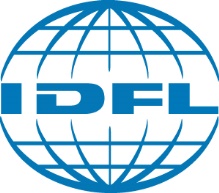Responsible Wool Standard (RWS)
People have been using wool for over 12,000 years. Wool is one of the most sustainable and versatile materials available, which is why it will continue to be a staple material for people for years to come. With wool being a major part of textiles, Textile Exchange developed the Responsible Wool Standard (RWS). In part to ensure animal welfare, land preservation, and social welfare of workers. The elements of these standards impact the industry and the world at large.
What is the Responsible Wool Standard?
The RWS is a multi-layered and thorough standard that ensures that every part of the supply chain is certified: from raising the sheep that produce the wool to the manufacturers that make the products. Each piece of the supply chain must comply with responsible practices. What kind of practices?
- Social Welfare
Social Welfare includes the working conditions, wage compensation, and the health and safety of workers. The RWS ensures that all steps in the supply chain incorporate those elements of social welfare.
- Animal Welfare
Best practices adopted from farmers around the globe ensure that the sheep are well cared for, and the Five Freedoms of animal welfare are being provided.
- Land Health
Biodiversity, soil health, and the protection of native species are critical parts of the RWS. Only farms that use progressive methods of ensuring that these goals are met will qualify for the Responsible Wool Standard Certification.
The Responsible Wool Standard is meant to create industry benchmarks for land care, animal management, and the social welfare needs of the workers. Along the industry benchmarks, the standard simultaneously ensures the quality and purity of RWS wool through a robust chain of custody system. The standard is also meant to provide the industry with tools to recognize farmers’ best practices and have them labeled under the Responsible Wool Standard.
How is the Responsible Wool Standard Verified?
For wool to be given the RWS label, all steps in the supply chain must comply with all RWS standards. This supply chain is long for wool production and involves many hands, from the farmer to the final product. Everyone else between these two points, including the traders, the sourcing agents, the spinners, the fabric mills, and the garment makers, needs to fall under the Responsible Wool Standard banner.
How is the Responsible Wool Standard Certified?
For anyone in the wool supply chain to be certified with the RWS, they must have on-site inspections done by accredited third-party verification bodies and regular audits of their processes and systems.
Who Benefits from the Responsible Wool Standard?
The Responsible Wool Standards gives farmers, companies, and manufacturers the credibility of an internationally recognized standard that ensures that the wool used in their products is responsibly managed and ethically sourced. Consumers and retailers will be able to confidently purchase and sell products that bear the RWS label, knowing that they have been vetted for their responsible wool harvesting practices.
How Can You Be Certified for the Responsible Wool Standard?
IDFL is a leader in the certification of products and materials, including the Responsible Wool Standard. Reach out to IDFL today at audits@idfl.com and see how IDFL audits can lead to you earning the Responsible Wool Standard certification.

